

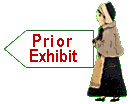
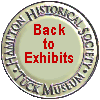

|
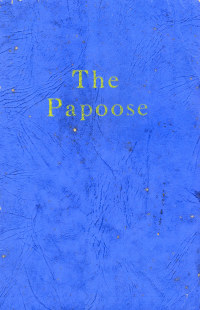 Click the image at right to see the 1947 Papoose, the Hampton Center School Yearbook.
Click the image at right to see the 1947 Papoose, the Hampton Center School Yearbook.
|
 Click the image at right to read about our Standing Stool, an early child-rearing device.
Click the image at right to read about our Standing Stool, an early child-rearing device.
|
 Embroidered eagle and flag, early 1900's. Located in the Tuck Museum building.
Embroidered eagle and flag, early 1900's. Located in the Tuck Museum building.
Print available for purchase in the Museum Store's Print Catalog |
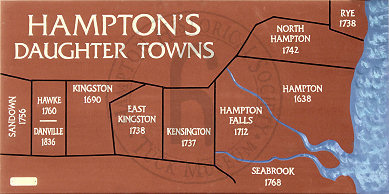 Hampton’s land grant from Massachusetts was 100 square miles. This map shows the boundaries of the towns set off from the original grant with the dates when they were set off or incorporated. Located in the Tuck Museum building.
Hampton’s land grant from Massachusetts was 100 square miles. This map shows the boundaries of the towns set off from the original grant with the dates when they were set off or incorporated. Located in the Tuck Museum building.
Print available for purchase in the Museum Store's Print Catalog |
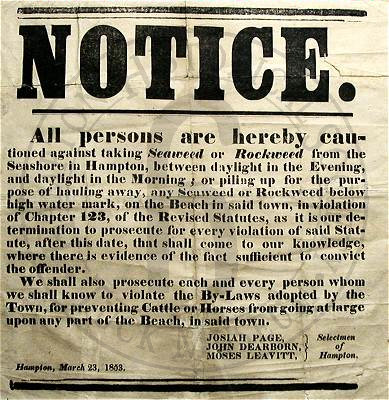 Laws regulating the taking of seaweed and rockweed went back on the record books as far as 1757. Seaweed was used by farmers for fertilizer. Located in the Tuck Museum building.
Laws regulating the taking of seaweed and rockweed went back on the record books as far as 1757. Seaweed was used by farmers for fertilizer. Located in the Tuck Museum building.
|
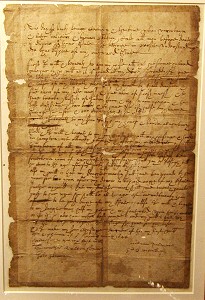 William Palmer's Will 1644
William Palmer's Will 1644
William Palmer was a grantee and one of the first settlers in Hampton in 1638, having first lived in Watertown and Newbury Massachusetts. Ann, mentioned in the will, is his second wife. William had three sons and two daughters. The oldest son, Edward, also had land granted to him in 1841. Below is the text of the will: The day of death being certain and the time when uncertain and both Religious and human policy (?) call all men before death to dispose of their estate and I being in perfect understanding do thus dispose of my outward estateLocated in the Tuck Museum building. |
Carved boardOne example of local folk art is the carved board below. One side shows a series of buildings on Winnacunnet Road- The JJ Leavitt Store, Thomas Lane House, Simon Jenness residence and blacksmith shop, and the East End Schoolhouse. The town history reveals that Simon Jenness came to Hampton in 1832 and lived with Thomas Lane where he learned his trade. After marriage he settled on part of the Lane homestead.
Still standing today are the Leavitt store (now a private residence) and the Lane and Jenness homes. The barns and blacksmith shop and school have been torn down.
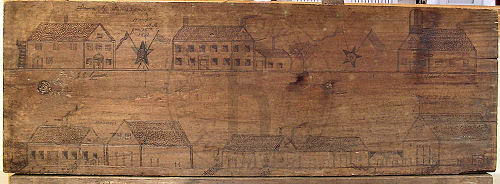
44" x 15" x 3/4" On the reverse of the board is the carving of two sloops – the Torrent and the Voland. The words "Capt Palmer" are carved next to the Voland.
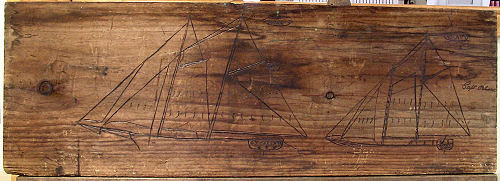
Located in the Tuck Museum building.
|
|
Below are a school bass drum (1928), and several views of an M.W. Brown piano, made in the late 19th century. Only several hundred of these pianos were ever made by this Hampton-based company. Both articles are located in the Tuck Museum building. |
|

|
|
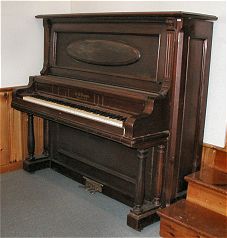
|
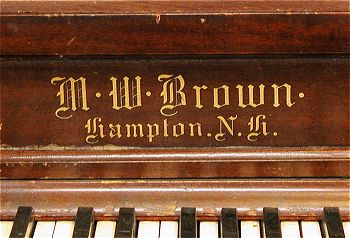
|
Early CamerasLocated in the Tuck Museum building. |
|

|
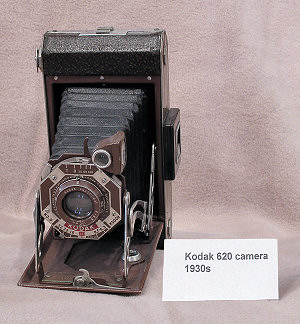
|